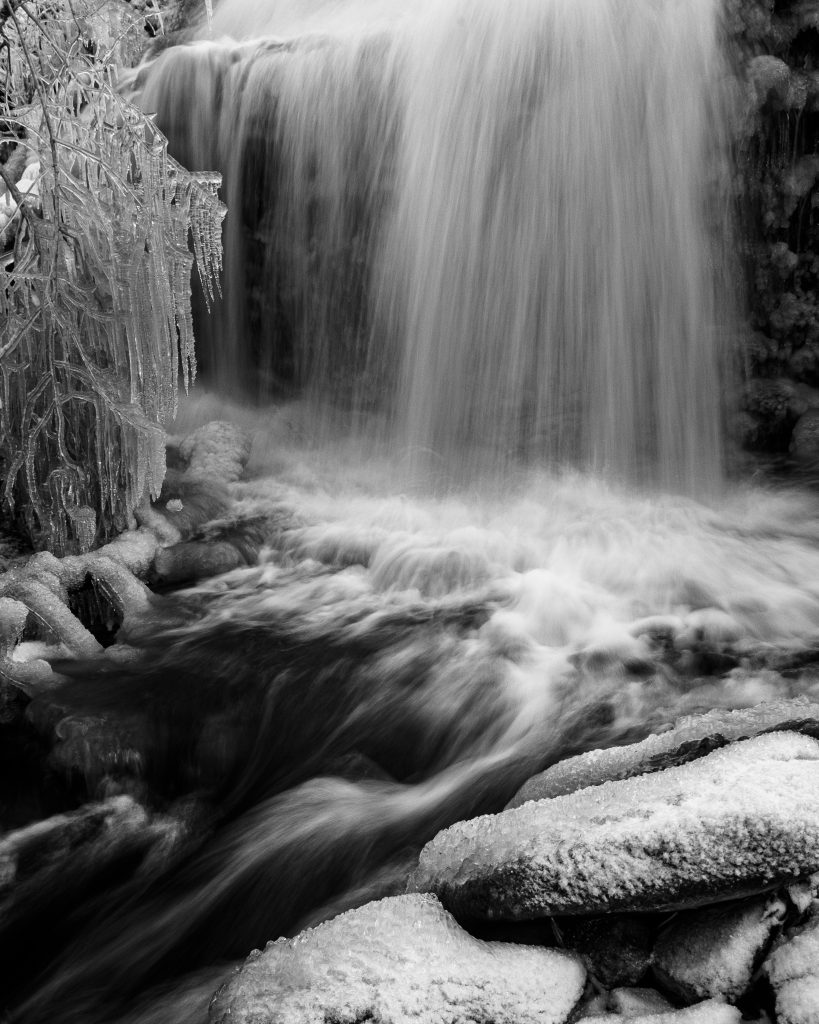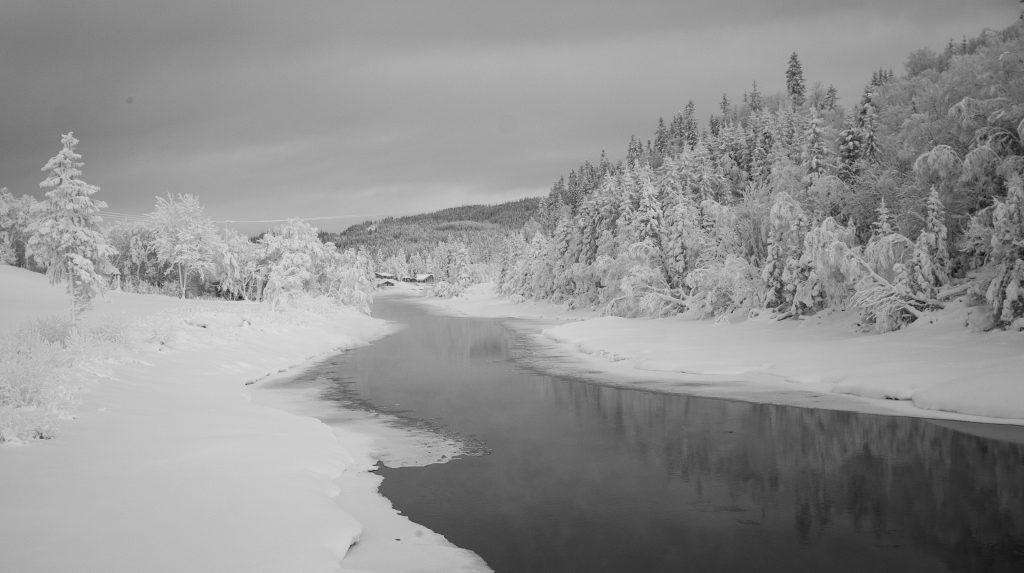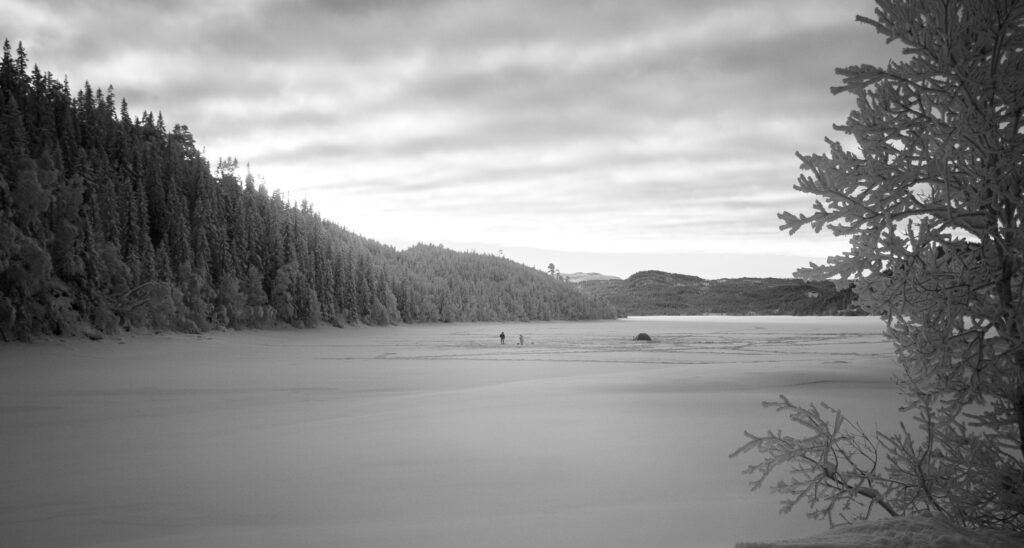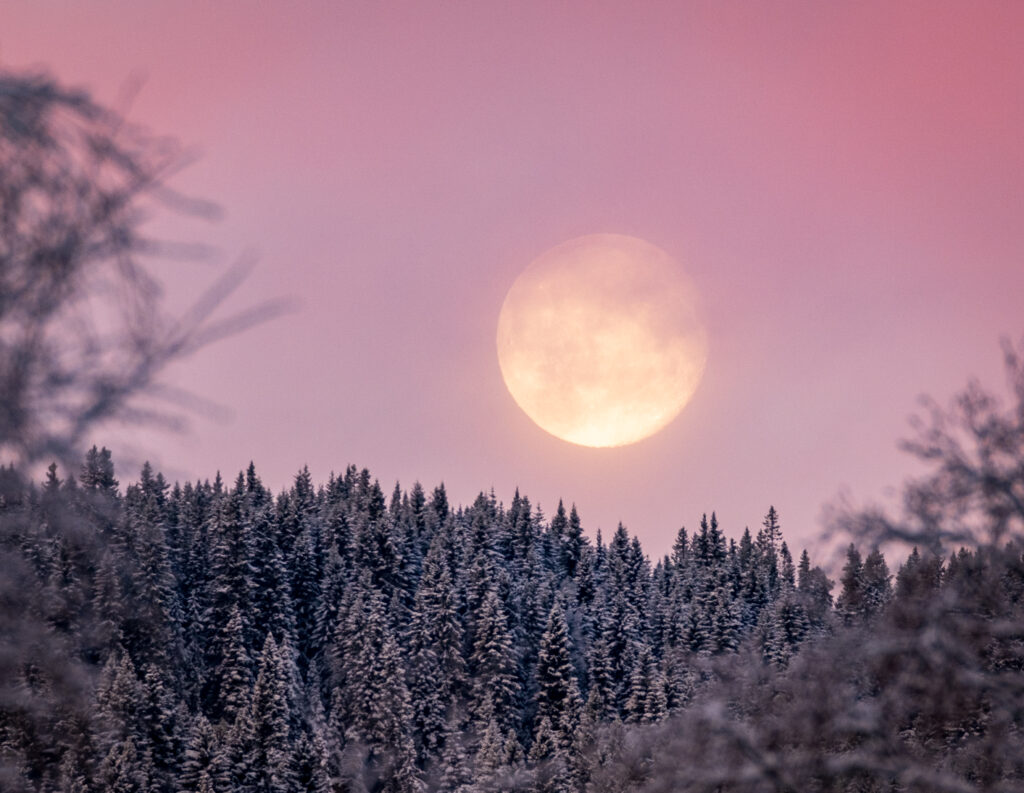I’ve started to explore the possibilities with infrared photographies. Some subjects will be quite different, but others are almost equal to a normal black and white image. Infrared waterfalls are one of those subjects that are almost the same, but not quite the same still. The contrasts are a bit different. Especially the parts of the water that are transparent in normal vision will be almost black in infrared. It is really interesting to see the world through an infrared camera. You should try it once.
Black and white

Osbrua 
Skjenaldelva 
Icefishers at Gangåsvatnet
During the winter, the colours turn more monochrome and many pictures also turn slight blue due to the snow reflecting the sky. Many cameras reads this wrong and end up setting the colours profile to cold.
One way to avoid this is to adjust the profile in your camera manually. An other way is to set the camera in black and white settings. If you have a mirrorless your electronic viewfinder will be black and white as well.
I’ve taken this to a new level by converting one of my cameras to infrared. I’ll give some more details of the actual work involved in a later post. Infrared is a light that the human eye don’t see. The image sensor of a camera is normally filtered to not see this light, but with a little surgery the camera can convert this light to something visible to the human eye. The result is a deep black and white image with a lot of contrasts and some unexpected contrasts.
The moon
One morning I was out with my dog and fortunately I brought my camera. As the moon was dipping the horizon and the sun was on its way up, the mist also arose from the close by river. All together it was a magical morning.

Morning mist and the moon 
The moon lit by the sunrise
The morning can be quite challenging to capture. Especially when parts of the scene is lit. My camera got a in body stabilisation and paired with the right lens with stabilisation it really helps on low light scenes like these. If you don’t have a camera with these features you could use a tripod. These images are captured at 1/40s, f/8 and ISO400.
Cold winter

The weather has been nice for a long time now. Crystal clear nights and some clouds in the horizon during the day. But since the days here up north are pretty short (only 6 hours at the time of writing this post) the temperatures will be creeping downwards. Right now it has stabilised at approximately -18C.
I went out to the local river and the breeze that comes together with the water flowing is extreme. The last rays of sun had just faded and the blue hour started. Mist arose from the river and created a magical, but cold, moment.
During these hours you might be able to catch something special.
Negative space

Negative space is a effect used to strengthen elements in the frame. You don’t need to use just one colour, but the image above is a typical example where the lack of details in the mist actually draws attention to the two trees.
Continue reading “Negative space”Remember your batteries

You might wonder what a picture of a snowy surface with a stripe of brown water has to do with the title “Remember your batteries”, well the story is quite simple and you will soon find out.
Continue reading “Remember your batteries”Norwegian winter

The cold winter in Norway can be nice as well. When the temperatures creeps below -20oC the landscape turns into a more quiet one. The crisp snow reduces much of the sounds. Cars moving on snow instead of asphalt makes less noise as well.
Continue reading “Norwegian winter”






